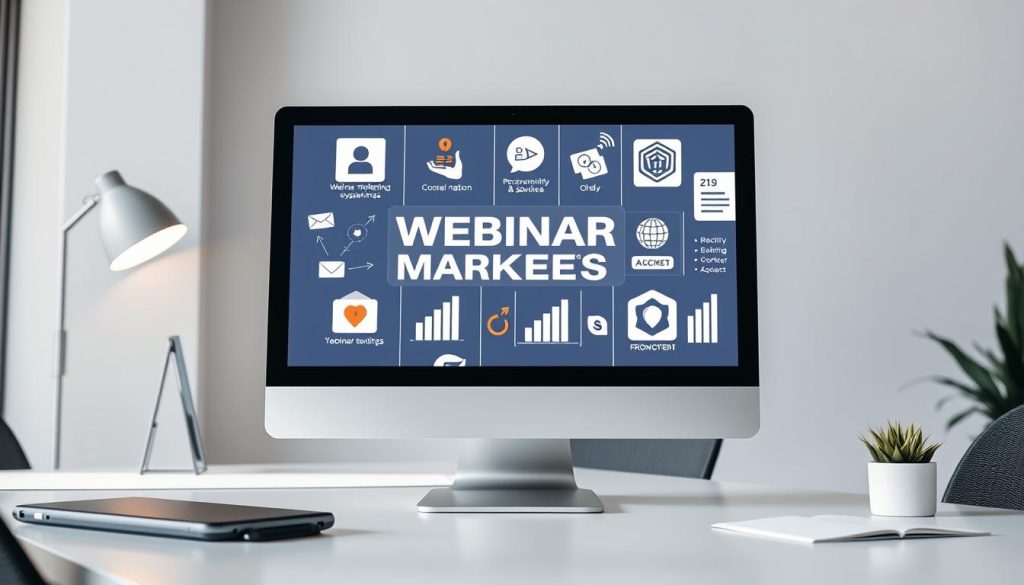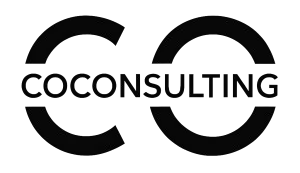We have gathered insights from various sources to provide a comprehensive guide on creating engaging online seminars that drive results.
By leveraging effective strategies, you can connect with your audience, build brand awareness, and boost business growth. Our expertise will help you elevate your online presence through targeted and impactful online seminars.
Our goal is to provide actionable tips and insights that you can apply to your online seminar efforts, ultimately driving business success.
Key Takeaways
- Effective online seminar strategies to boost engagement
- Tips for creating impactful online seminars
- Best practices for leveraging online seminars for business growth
- Expert insights on audience connection and brand awareness
- Actionable advice for elevating your online presence
Understanding Webinar Marketing
In today’s digital landscape, webinar marketing has emerged as a crucial strategy for businesses to connect with their audience and drive growth. According to recent data, webinars have become an essential tool for companies to promote their products, educate their customers, and build brand awareness.
Webinar marketing involves using online seminars to engage with your target audience, generate leads, and drive conversions. By leveraging virtual event strategies, businesses can reach a wider audience beyond geographical limitations, making it a highly effective marketing tactic.
What is Webinar Marketing?
Webinar marketing is a form of online marketing that involves hosting webinars to promote products, services, or ideas. It allows businesses to connect with their audience in real-time, providing valuable information and insights that can help build trust and credibility. By using digital presentation techniques, webinar marketing enables companies to present their offerings in an engaging and interactive manner.
Benefits of Using Webinars
The benefits of using webinars are numerous. They include:
- Increased reach and visibility for your brand
- Generation of high-quality leads
- Opportunities for real-time engagement and feedback
- Cost-effective compared to traditional marketing methods
- Ability to establish your brand as a thought leader in your industry
By incorporating webinars into your marketing strategy, you can experience these benefits firsthand and drive meaningful growth for your business.
Common Webinar Formats
There are several common webinar formats that businesses can utilize, depending on their goals and target audience. These include:
- Educational webinars focused on providing valuable insights and information
- Product demonstration webinars showcasing new or existing products
- Panel discussion webinars featuring industry experts
- Q&A session webinars focused on addressing audience questions

By understanding the different webinar formats and their applications, businesses can choose the most effective approach for their marketing goals. Whether you’re looking to educate your audience, promote a product, or simply engage with your customers, webinar marketing offers a versatile and powerful tool for achieving your objectives.
Defining Your Target Audience
The key to a compelling webinar lies in knowing your audience inside and out. To create a successful online seminar, you need to have a deep understanding of your target audience, including their needs, preferences, and pain points.
By understanding your audience, you can tailor your webinar promotion tactics to effectively reach and engage them. This involves identifying the right messaging, choosing the appropriate channels, and creating content that resonates with your attendees.
Importance of Audience Segmentation
Audience segmentation is crucial for the success of your webinar. By dividing your audience into distinct groups based on their characteristics, you can create targeted content that speaks directly to each group’s needs.
Effective segmentation allows you to:
- Tailor your messaging to resonate with each group
- Choose the most effective channels to reach your audience
- Create content that addresses the specific pain points of each segment
As a result, your webinar becomes more relevant and engaging, leading to higher attendance rates and better overall performance.
“Understanding your audience is the first step to creating a webinar that truly connects with them.”
Techniques for Audience Research
Conducting thorough audience research is essential for understanding your target audience. Some effective techniques include:
- Surveys and questionnaires to gather information about your audience’s preferences and pain points
- Social media listening to understand their concerns and interests
- Analyzing customer feedback to identify patterns and trends
By using these online seminar tips, you can gather valuable insights into your audience’s needs, enabling you to create a webinar that truly resonates with them.

By combining audience segmentation with thorough research, you can develop a deep understanding of your target audience, ultimately leading to a more successful webinar.
Crafting Compelling Webinar Content
Crafting compelling webinar content is crucial for capturing and maintaining the attention of your attendees. To achieve this, we need to focus on several key elements that make your content engaging and memorable.
Key Elements of Engaging Content
Engaging content is the foundation of a successful webinar. It should be informative, relevant, and entertaining. To create such content, we must understand our audience’s needs and preferences. Here are some key elements to consider:
- Clear and concise messaging
- Relevant and timely topics
- Interactive elements such as polls and Q&A sessions
- Visual aids like slides, videos, and infographics
By incorporating these elements, we can keep our attendees engaged and interested in the content being presented.
Creating a Strong Webinar Outline
A well-structured webinar outline is essential for delivering a coherent and engaging presentation. It helps us stay on track and ensures that our key messages are conveyed effectively. Here are some tips for creating a strong outline:
- Define the webinar’s objective and key takeaways
- Organize content into logical sections
- Include interactive elements to keep attendees engaged
- Plan for a clear and concise conclusion
By following these steps, we can create a compelling webinar outline that guides our presentation and keeps our attendees engaged.
Incorporating Storytelling Techniques
Storytelling is a powerful tool for making our webinar content more engaging and memorable. It allows us to connect with our audience on an emotional level and convey complex information in a more relatable way. Here are some ways to incorporate storytelling into our webinars:
- Use real-life examples or case studies
- Create a narrative arc that guides the presentation
- Incorporate emotional triggers to resonate with the audience
As Forbes notes, “Storytelling is a fundamental part of human communication, and when done well, it can make your message more compelling and memorable.”
“Storytelling is the most effective way to convey complex information in a way that is both engaging and memorable.”

By incorporating these techniques into our webinar content, we can create a more engaging and memorable experience for our attendees. This, in turn, can lead to higher levels of audience satisfaction and a greater likelihood of achieving our business objectives.
Choosing the Right Webinar Platform
The right webinar platform can make all the difference in engaging your audience and achieving your virtual event strategies. With so many options available, it’s crucial to evaluate them based on your specific needs.
When selecting a webinar platform, there are several key features to consider. These include:
Key Features to Look For
- Reliable Streaming: Ensure the platform provides high-quality video and audio streaming to keep your audience engaged.
- Interactive Tools: Look for platforms that offer interactive features such as polls, Q&A sessions, and chat boxes to enhance audience participation.
- Scalability: Choose a platform that can handle a large number of attendees without compromising performance.
- Integration: Opt for a platform that integrates seamlessly with your existing marketing tools and CRM systems.
- Analytics: Select a platform that provides detailed analytics to help you measure the success of your webinar.
By considering these features, you can narrow down your options and find a platform that meets your needs.
Popular Webinar Platforms Comparison
Some of the most popular webinar platforms include Zoom, GoToWebinar, and Webex. Each of these platforms has its strengths and weaknesses.
| Platform | Key Features | Pricing |
|---|---|---|
| Zoom | High-quality video, interactive tools, scalability | Starts at $14.99/month |
| GoToWebinar | Robust analytics, integration with marketing tools | Starts at $49/month |
| Webex | Advanced security features, high-quality streaming | Starts at $13.50/host/month |
When comparing these platforms, consider your specific needs and the online seminar tips that are most relevant to your goals. By choosing the right platform, you can ensure a successful and engaging webinar that meets your audience’s needs.
Promoting Your Webinar Effectively
To maximize your webinar’s impact, effective promotion is crucial. We need to ensure that our target audience is aware of the webinar and is motivated to attend.

Utilizing Email Marketing
Email marketing remains one of the most effective channels for promoting webinars. We can leverage our existing email list to send targeted promotional emails, creating a sense of urgency and encouraging registrations.
To make the most of email marketing, we should personalize our messages, use compelling subject lines, and include clear calls-to-action.
- Create a series of emails to build anticipation
- Use segmentation to target specific audience groups
- Include a clear registration link
Leveraging Social Media Channels
Social media platforms offer a vast opportunity to promote our webinar to a wider audience. We can share engaging content, create event pages, and utilize paid advertising to drive registrations.
To effectively leverage social media, we should identify the most relevant platforms for our target audience and create a content calendar to ensure consistent promotion.
- Share eye-catching graphics and videos
- Utilize relevant hashtags to increase visibility
- Engage with our audience by responding to comments
Building Landing Pages that Convert
A well-designed landing page is critical for converting visitors into registrants. We should focus on creating a clear and concise message, highlighting the benefits of attending the webinar.
To build a landing page that converts, we should use a clear headline, prominent call-to-action, and ensure that the page is mobile-friendly.
| Landing Page Element | Description | Best Practice |
|---|---|---|
| Headline | Clear and concise title | Use action-oriented language |
| Call-to-Action | Prominent registration button | Use contrasting colors |
| Content | Webinar details and benefits | Keep it concise and focused |
Engaging Your Audience During the Webinar
To keep your audience engaged during a webinar, it’s crucial to incorporate interactive elements that foster a dynamic experience. Engaging your audience is not just about presenting information; it’s about creating a connection that keeps them invested in your message.

Techniques to Drive Interaction
Driving interaction during a webinar can be achieved through several techniques. Live chats allow attendees to ask questions and receive immediate responses, creating a sense of community. Interactive quizzes can also be used to test attendees’ knowledge and keep them engaged.
Another effective method is to use gamification elements, such as rewards for participation or completing certain tasks during the webinar. This not only keeps the audience engaged but also makes the experience more enjoyable.
Polls and Q&A Sessions
Polls and Q&A sessions are powerful tools for engaging your audience. Polls allow you to gauge the audience’s opinions on specific topics, providing valuable feedback and encouraging participation.
Q&A sessions offer attendees the opportunity to ask questions and receive detailed responses, helping to clarify any doubts they may have. These sessions can be conducted live, with a moderator reading out questions, or through a live chat feature where attendees can type in their questions.
By incorporating these interactive elements, you can create a more engaging and dynamic webinar experience that resonates with your audience and leaves a lasting impression.
Follow-Up Strategies After the Webinar
Following up with attendees is a critical step in webinar marketing best practices. After the webinar, it’s essential to maintain the momentum and drive further conversions.
Effective follow-up strategies not only thank attendees for their participation but also gather valuable feedback and measure the success of your webinar. This step is crucial in understanding what worked and what didn’t, allowing you to refine your approach for future webinars.
Effective Post-Webinar Emails
One of the most effective ways to follow up with attendees is through targeted email campaigns. These emails should be personalized, timely, and relevant to the content presented during the webinar.
- Send a thank-you email within 24 hours of the webinar.
- Include a link to the webinar recording and any additional resources.
- Encourage feedback through surveys or direct replies.
By using email marketing effectively, you can nurture leads and guide them further down the sales funnel.
Gathering Feedback and Measuring Success
Gathering feedback is vital for understanding the impact of your webinar and identifying areas for improvement. Use surveys and polls to collect data from attendees.
| Feedback Method | Purpose | Benefits |
|---|---|---|
| Post-Webinar Surveys | Gather detailed feedback on content and presentation. | Helps in understanding attendee satisfaction and areas for improvement. |
| Email Surveys | Collect feedback on the overall webinar experience. | Provides insights into attendee engagement and expectations. |
| Polls During Webinar | Gauge real-time feedback and engagement. | Enhances interaction and helps in adjusting content on the fly. |
Measuring the success of your webinar involves tracking key metrics such as attendance rates, engagement levels, and conversion rates. By analyzing these metrics, you can refine your digital presentation techniques and improve future webinars.

Analyzing Webinar Performance
Understanding your webinar’s performance is key to refining your virtual event strategies. To optimize your webinar marketing efforts, you need to analyze your webinar performance and track key metrics.
Key Metrics to Track
To gauge the success of your webinar, it’s essential to monitor specific metrics that provide insights into its performance. These include:
- Registration Rate: The number of people who registered for your webinar.
- Attendance Rate: The percentage of registered attendees who actually attended the webinar.
- Engagement Metrics: Poll responses, questions asked during the Q&A session, and chat interactions.
- Conversion Rate: The percentage of attendees who took the desired action after the webinar.
According to a report by Webinar Benchmarks, webinars with high engagement rates tend to have higher conversion rates. “Webinars that incorporated interactive elements saw a significant boost in attendee engagement and subsequent conversion rates,” the report states.
| Metric | Description | Importance |
|---|---|---|
| Registration Rate | Number of registrations | Indicates interest in the topic |
| Attendance Rate | Percentage of attendees | Reflects the effectiveness of reminder strategies |
| Engagement Metrics | Polls, Q&A, chat interactions | Shows attendee involvement |
Tools for Webinar Analytics
Several tools can help you analyze your webinar performance. Some popular options include:
- Webinar Platform Analytics: Most webinar platforms, such as Zoom Webinar and GoToWebinar, offer built-in analytics tools.
- Google Analytics: Can be used to track webinar landing page performance and conversion rates.
- Marketing Automation Tools: Platforms like Marketo and HubSpot provide detailed analytics on webinar performance and attendee behavior.
By leveraging these tools and tracking the right metrics, you can gain valuable insights into your webinar’s performance and make data-driven decisions to improve future webinars.
Repurposing Webinar Content
Repurposing webinar content is a savvy way to extend its lifespan and reach. By doing so, we can maximize its value and continue to drive engagement and conversions. In this section, we will explore effective strategies for repurposing webinar content, focusing on creating blog posts and producing video highlights for social media.
Creating Blog Posts from Webinars
Transforming a webinar into a blog post is a straightforward process that can significantly enhance our content library. We start by transcribing the webinar, then edit and format the transcript into a cohesive article. This not only improves SEO but also makes the content more accessible to a wider audience.
To create an engaging blog post, we should:
- Identify key takeaways and highlight them
- Use subheadings to break up the content
- Incorporate relevant digital presentation techniques to enhance visual appeal
For instance, a webinar on “Advanced Marketing Strategies” can be repurposed into a detailed blog post that covers various aspects of marketing, including digital presentation techniques. This approach allows us to reach readers who prefer consuming content in written format.
| Webinar Topic | Blog Post Title | Key Highlights |
|---|---|---|
| Advanced Marketing Strategies | 10 Proven Marketing Strategies for Business Growth | SEO Optimization, Social Media Marketing, Email Campaigns |
| Effective Sales Techniques | Boosting Sales: Techniques That Work | Building Customer Relationships, Identifying Sales Opportunities, Negotiation Skills |
Producing Video Highlights for Social Media
Creating video highlights from webinars is an effective way to capture attention on social media platforms. By extracting key moments or quotes from the webinar, we can create engaging, bite-sized content that resonates with our audience.
To produce compelling video highlights, we should:
- Identify impactful moments or statements from the webinar
- Edit the clips to ensure they are concise and engaging
- Add captions or graphics to enhance visual appeal and convey online seminar tips
For example, a quote from a webinar on “Leadership Skills” can be turned into a short video clip with an overlay of the speaker’s name and topic. Sharing such content on social media platforms can drive traffic to our website and encourage further engagement.
By repurposing webinar content into blog posts and video highlights, we can significantly extend its reach and impact. For more insights on repurposing webinar content, visit https://www.getcontrast.io/learn/repurpose-webinar.
“Content is king, but repurposing it is the key to maximizing its reign.”
Continuous Improvement for Future Webinars
As you strive for webinar marketing excellence, continuous improvement should be at the forefront of your strategy. To achieve this, we need to focus on two critical areas: learning from our audience and incorporating industry best practices.
Learning from Audience Feedback
Understanding your audience’s needs and preferences is vital for creating engaging webinars. We can gather valuable insights by collecting feedback through surveys, polls, and Q&A sessions. This information helps us identify areas for improvement and make data-driven decisions for future webinars.
For instance, a survey conducted after a webinar can reveal what attendees found most valuable and what they felt was lacking. By analyzing this feedback, we can refine our content and presentation style to better meet our audience’s expectations.
“The most valuable feedback comes from the audience. It’s essential to listen to their concerns and suggestions to improve future webinars.”
Incorporating Best Practices
Staying up-to-date with the latest webinar marketing best practices is crucial for delivering high-quality virtual events. We should regularly review industry trends, attend webinars, and participate in relevant forums to stay informed.
Some key best practices to incorporate include:
- Using engaging visuals and interactive elements
- Optimizing webinar timing for maximum attendance
- Providing clear calls-to-action
- Repurposing webinar content for future marketing efforts
| Best Practice | Benefit |
|---|---|
| Engaging Visuals | Increased audience engagement |
| Optimized Timing | Higher attendance rates |
| Clear Calls-to-Action | Improved conversion rates |
By incorporating these best practices and continuously learning from our audience, we can refine our webinar strategy and drive better results.
Building a Webinar Series
Establishing a webinar series is a strategic move to foster long-term engagement with your audience. By doing so, you can create a loyal following and drive sustained growth. A webinar series allows you to delve deeper into topics, providing more comprehensive insights to your audience.
Benefits of a Consistent Series
A consistent webinar series offers several benefits, including increased brand visibility and established authority in your industry. It allows you to build a relationship with your audience, fostering trust and loyalty. Moreover, a series provides a structured framework for content delivery, making it easier to plan and execute your marketing strategy.
Some key advantages of a webinar series include:
- Enhanced audience engagement through regular content delivery
- Improved brand recognition and credibility
- Opportunities for upselling or cross-selling relevant products or services
- A platform for showcasing expertise and thought leadership
Planning and Scheduling Techniques
To create an effective webinar series, we need to plan and schedule our content carefully. This involves identifying relevant topics, determining the frequency of our webinars, and promoting our series effectively. Online seminar tips can be invaluable in this planning phase, helping us to avoid common pitfalls and ensure a smooth execution.
When planning your webinar series, consider the following:
- Define your target audience and their needs
- Choose topics that resonate with your audience and align with your brand
- Develop a content calendar to ensure consistency and organization
- Utilize webinar promotion tactics such as email marketing and social media to drive registrations
By following these steps and maintaining a consistent schedule, you can create a successful webinar series that drives long-term engagement and growth.
Legal and Compliance Considerations
As we elevate our business with webinar marketing best practices, it’s crucial to address the legal and compliance aspects that can make or break our digital presentation techniques. Hosting webinars comes with potential risks that can be mitigated by being aware of the legal landscape.
Copyright Issues in Webinars
Understanding copyright issues is vital when creating and sharing webinar content. We must ensure that our materials do not infringe on existing copyrights, and that we have the necessary permissions or licenses for any third-party content used in our webinars.
GDPR and Privacy Regulations
Compliance with GDPR and privacy regulations is also essential. We need to be transparent about the data we collect during webinars and ensure that we handle attendee information in accordance with relevant laws. This includes obtaining necessary consents and providing clear opt-out options.
By being mindful of these legal and compliance considerations, we can minimize risks and focus on delivering high-quality webinars that engage our audience and drive business growth. Effective webinar marketing is not just about the content or presentation; it’s also about doing it right and staying compliant.
